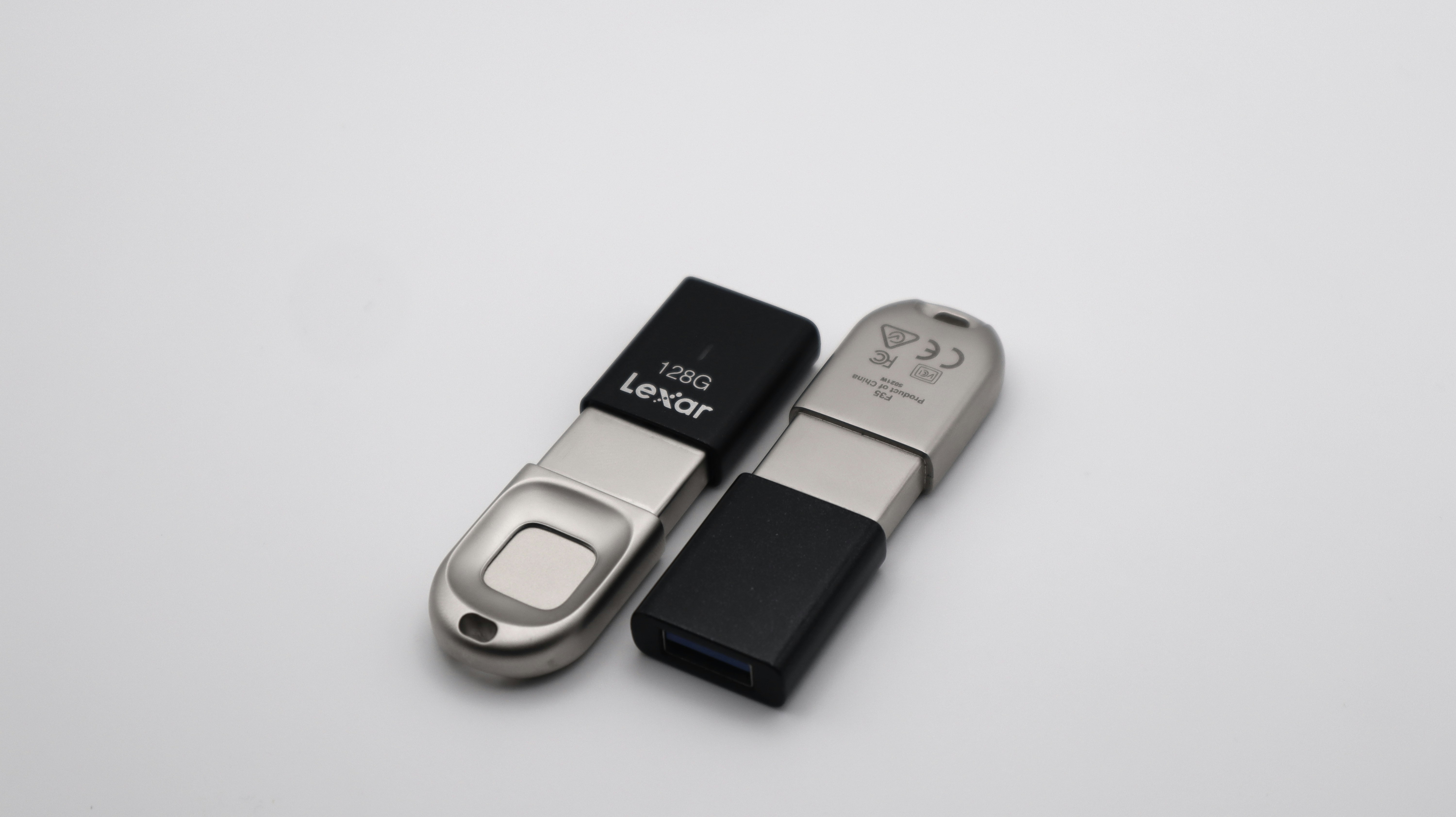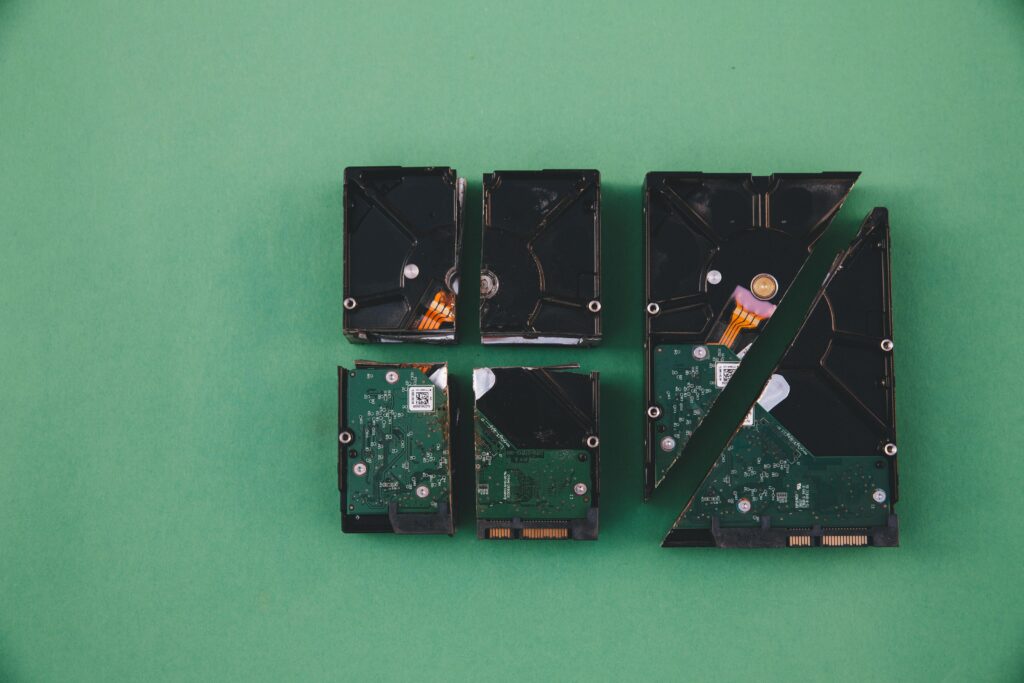Introduction to External Drives
External drives serve as an essential tool for data storage and transfer in our increasingly digital world. They allow users to expand their storage capacity beyond what is available on internal drives, enabling the retention and transport of large quantities of data, such as documents, photos, videos, and software applications. Two primary types of external drives are commonly used: Hard Disk Drives (HDDs) and Solid State Drives (SSDs), each with unique characteristics that make them suitable for different applications.

HDDs, or Hard Disk Drives, are traditional storage devices that utilize spinning disks coated with magnetic material to read and write data. They are known for providing larger storage capacities at a lower cost per gigabyte, making them an attractive choice for users who require substantial amounts of storage without a significant financial investment. This makes HDDs particularly popular among users who need backup solutions for extensive data libraries, such as photographers and videographers. However, due to their mechanical components, HDDs tend to be slower and more susceptible to physical damage compared to their SSD counterparts.
On the other hand, Solid State Drives (SSDs) utilize flash memory technology to store data, boasting significantly faster read and write speeds. This speed advantage allows users to boot up devices and access files much more quickly than with HDDs. Additionally, SSDs are more robust and resistant to physical shock, as they lack moving parts, which enhances their durability and reliability. As the demand for speed and efficiency in data handling continues to rise, SSDs are becoming increasingly favored across various user bases, including gamers, creatives, and business professionals.
Choosing the appropriate external drive in 2025 involves an understanding of these differences between HDDs and SSDs. Assessing individual storage needs, budget, and performance expectations is vital to making an informed decision that will provide the best value and functionality for personal or professional use.
Understanding HDDs: How They Work and Their Benefits
Hard Disk Drives (HDDs) are a type of data storage device that employs mechanical components to read and write data. At the heart of the HDD are one or more spinning disks, known as platters, which are coated with a magnetic material. These platters rotate at high speeds, commonly between 5400 and 7200 revolutions per minute (RPM). Alongside them are read/write heads that move over the surface of the platters, allowing them to access and store information. The positioning of these heads is controlled by an actuator arm, which allows the hardware to quickly navigate to the required data locations.
The primary advantage of HDDs lies in their substantial storage capacity. With current advancements, HDDs can offer several terabytes (TB) of space, making them ideal for users who need to manage large amounts of data, such as multimedia files, backups, and archives. This makes HDDs an excellent choice for personal use, businesses, and professionals who require extensive data repository without compromising budgetary constraints. Compared to solid-state drives (SSDs), HDDs are often much more affordable, providing a cost-effective solution for high-capacity storage needs.
Another notable benefit of HDDs is their longevity in certain applications. The mechanical nature of these drives allows them to recover from electrical failures, which can be advantageous in specific environments. Despite being more vulnerable to physical damage due to their moving parts, many HDDs are built with robust designs to withstand typical operational conditions. Furthermore, HDDs have a well-established reliability history, providing users with confidence in their data’s safety over the long term.
Ultimately, while SSDs are increasingly popular due to their speed and efficiency, HDDs remain a viable option for those prioritizing storage capacity and affordability in their external drive selection. Their mechanical components may seem outdated, but the benefits of large storage beyond cost make HDDs an enduring choice in data management for 2025 and beyond.
Understanding SSDs: How They Work and Their Benefits
Solid State Drives (SSDs) represent a significant technological advancement in data storage solutions. Unlike traditional Hard Disk Drives (HDDs), SSDs utilize flash memory technology instead of mechanical components. This fundamental difference grants SSDs several important characteristics that improve performance and reliability. In an SSD, data is stored in microchips, allowing for immediate access and retrieval, which eliminates the latency inherent in HDDs that rely on spinning platters and read/write heads.

One of the primary benefits of SSDs is their extraordinary speed. They dramatically reduce boot times and file transfer durations compared to HDDs. This speed advantage makes SSDs particularly well-suited for tasks that require quick data access, such as gaming, video editing, and other performance-intensive applications. Users frequently report a transformed experience when switching from HDDs to SSDs, especially in how swiftly programs load and operate.
Another significant characteristic of SSDs is their lower latency. SSDs can access data almost instantaneously, which enhances the efficiency of operations and leads to faster application launches. This responsiveness is a critical factor for users who depend on high performance for their work or entertainment needs. Moreover, lower latency contributes to overall system stability, reducing the occurrence of lag or stuttering during demanding tasks.
Durability is yet another compelling feature of SSDs. With no moving parts, they are inherently more resistant to physical shock and damage. This makes SSDs an excellent choice for portable devices, as they can withstand harsh conditions better than their HDD counterparts. Consequently, they are increasingly adopted across various sectors, including personal computing, professional environments, and data-intensive industries, where reliability is paramount.
In essence, the combination of speed, lower latency, and enhanced durability positions SSDs as the preferred option for modern computing needs, making them a valuable investment for anyone looking to improve their storage performance.
HDDs vs. SSDs: A Comparative Analysis
When considering external storage solutions for 2025, HDDs (Hard Disk Drives) and SSDs (Solid State Drives) stand out as the two leading options. Each technology has unique advantages and disadvantages based on several crucial factors, including speed, cost, durability, and storage capacity. Understanding these aspects can help users make an informed decision that aligns with their specific requirements.
Speed is one of the most significant distinctions between HDDs and SSDs. SSDs utilize flash memory, enabling significantly faster data access and transfer rates compared to HDDs, which rely on spinning disks. For applications that demand high performance, such as gaming or video editing, SSDs provide a noticeable advantage, reducing load times and improving overall efficiency. In contrast, HDDs are generally slower, making them less suited for speed-intensive tasks but adequate for basic storage needs.

Cost is another critical factor that influences the choice between HDDs and SSDs. Typically, HDDs are less expensive per gigabyte, making them an attractive option for users requiring large amounts of storage at a lower upfront cost. However, the cost gap has been narrowing as SSD technology advances, with prices gradually dropping, making them more accessible while still offering superior performance features. Consumers must weigh the initial investment against the potential longevity and performance benefits of SSDs.
Durability is another aspect where SSDs usually have the upper hand. Since they contain no moving parts, SSDs are less susceptible to physical damage from drops or impacts compared to HDDs, which can fail if subjected to shock. This characteristic makes SSDs ideal for mobile users who need reliable storage for on-the-go scenarios. Meanwhile, HDDs may still appeal to those who prioritize large volumes of data storage and are willing to manage the associated risks.
Finally, storage capacity remains a consideration when comparing these drives. HDDs are available in significantly larger capacities, making them suitable for archiving large streams of media or extensive databases. SSDs, while available in various sizes, tend to have lower maximum capacities, although higher-capacity SSDs are increasingly becoming available and cost-effective. Ultimately, the decision between an HDD and an SSD will depend upon individual priorities, whether that be performance, budget, or storage needs.
Factors to Consider Before Choosing an External Drive
When considering whether to choose a hard disk drive (HDD) or a solid-state drive (SSD) as your external storage solution in 2025, it is essential to evaluate several critical factors that align with your specific needs. The intended use is one of the foremost considerations. For example, if you’re a gamer requiring quick load times and seamless gameplay, an SSD would be advantageous due to its faster data transfer speeds. Conversely, for routine backups or media storage, an HDD could be sufficient and more cost-effective.
Another factor to consider is transfer speed. SSDs typically offer read and write speeds significantly faster than HDDs, allowing for quick access to files and efficient data transfer, which is particularly important for video editing or large file transfers. If your work involves managing large multimedia files, the speed of an SSD can enhance your workflow considerably.
Durability is also an important factor. SSDs, being solid-state devices without moving parts, are inherently more resilient and less prone to mechanical failure compared to HDDs, which can be sensitive to physical shocks. If you plan to travel with your external drive or use it in environments where it may be subject to movement, the robustness of an SSD may outweigh its higher cost.
Finally, budget considerations should be at the forefront when making your choice. SSDs tend to be pricier per gigabyte than HDDs, particularly at larger capacities. Assessing how much storage you require and balancing that against your budget will help guide your decision. Ultimately, understanding the specific attributes and functionalities of each type of drive, coupled with how you plan to use the storage, will empower you to make an informed decision tailored to your personal or professional needs.
Top HDD Picks for 2025
As technology continues to evolve, selecting the right external drive remains a critical decision for both casual users and professionals. In 2025, various hard disk drives (HDDs) promise reliability and ample storage capacity, catering to diverse user needs. Here we present some of the best HDD choices available this year.
First on the list is the WD Elements Desktop 6TB. This external hard drive offers a remarkable balance of capacity and accessibility, making it perfect for users needing significant storage space for photos, videos, and documents. The 6TB drive connects via USB 3.0, ensuring quick data transfer speeds. Its plug-and-play feature allows for easy connectivity to both Windows and Mac computers without the need for additional software installations. Additionally, the WD Elements is known for its durability, and users can trust that their data is stored safely.
- World’s First 6TB 2.5” Portable Hard Drive
- Plug-and-play expandability
- Vast capacities up to 6TB[1] to store your photos, videos, music, important documents and more
Another excellent pick is the Seagate Backup Plus Slim 2TB. This sleek and portable hard drive is ideal for those on the go. At just 12.1 millimeters thick, it easily fits into a laptop bag or purse, making it a convenient option for mobile professionals and students. The 2TB capacity is ample for storing large files, including movies and gaming data. It also features an intuitive backup software that allows users to set up automatic backups, ensuring that their essential files are consistently saved.
- Store and access 2TB of photos and files on the go with Backup Plus Slim, a portable external hard drive
- This portable hard drive features a minimalist metal enclosure, and is a stylish USB drive
- Simply plug this portable hard drive into a Windows or Mac computer via the included USB 3.0 cable to back up files with…
Choosing the right external HDD in 2025 will largely depend on specific needs, such as storage capacity, portability, and reliability. Both the WD Elements Desktop 6TB and Seagate Backup Plus Slim 2TB offer excellent features, ensuring that users have the necessary tools to store their valuable data securely and efficiently.
Top SSD Picks for 2025
As we move into 2025, the market for external solid-state drives (SSDs) continues to expand, offering a diverse range of options tailored to various needs. Among the top contenders is the SanDisk Extreme Pro 2TB, which stands out due to its impressive speed and durability. This SSD offers read speeds of up to 2000 MB/s and write speeds of around 2000 MB/s, making it ideal for content creators and professionals who require fast data access. The rugged design ensures it can withstand the rigors of travel, packaging it with a sturdy aluminum body that offers heat dissipation and protection against physical damage. Users who need a reliable and high-performance solution for video editing or extensive data transfers will find the SanDisk Extreme Pro 2TB a suitable choice.
- Get NVMe solid state performance with up to 1050MB/s read and 1000MB/s write speeds in a portable, high-capacity drive(1…
- Up to 3-meter drop protection and IP65 water and dust resistance mean this tough drive can take a beating(3) (Previously…
- Use the handy carabiner loop to secure it to your belt loop or backpack for extra peace of mind.
Another excellent option is the Samsung T9 1TB, a compact and portable drive that harnesses the efficiency of USB 3.2 Gen 2 technology. This SSD provides read speeds up to 1050 MB/s, facilitating swift transfers of files, while the sleek design and lightweight form factor make it an excellent companion for on-the-go usage. The Samsung T9 also comes with AES 256-bit hardware encryption, offering an extra layer of data security, making it suitable for users who prioritize their privacy and data integrity.
- NONSTOP SPEED: Race through projects with our fastest SSD for creators; Load, edit and transfer with sustained read and …
- DYNAMIC THERMAL GUARD: When you’re elbow-deep in a passion project, the T9 Portable SSD stays cool; Its advanced thermal…
- ADAPTS TO EVERY NEED: Whether you’re using a desktop, camera or a gaming console3, count on the T9 Portable SSD for exte…
Lastly, the Crucial X10 Pro 2TB is another standout SSD for 2025, delivering exceptional performance for both casual and professional users. With read speeds that reach up to 1050 MB/s, this drive is designed for gamers and content creators, providing ample storage for high-quality files while ensuring quick accessibility. The Crucial X10 Pro features a durable design that resists shock and temperature extremes, making it an ideal choice for those who require reliability in various environments.
- High-Speed SSD Performance: Reach up to 1050MB/s read and write speeds, ideal for transferring large files, managing hig…
- Rugged & Compact Design: Built for durability, this external SSD offers IP55 water and dust resistance and drop protecti…
- iPhone 16 Ready: Capture 4K/8K videos from your iPhone 16 directly onto the Crucial X10 Pro SSD with up to 4TB of extra …
Cost Analysis: Is It Worth It to Invest in SSDs?
When deciding between Hard Disk Drives (HDDs) and Solid State Drives (SSDs), one of the foremost considerations is the cost. Traditionally, HDDs have been the more cost-effective option, offering larger storage capacities at lower prices. However, as technology evolves, concerns about durability, speed, and long-term performance have brought SSDs into the spotlight. In 2025, SSDs, although initially more expensive, may provide a more valuable investment over time.
Upfront costs for SSDs can be significantly higher compared to HDDs. For instance, a 1TB SSD could cost two to three times as much as an equivalent HDD, leading many consumers to question whether the investment is justified. However, the cost should not only be viewed from the perspective of immediate purchase price but rather through the lens of overall value and longevity. SSDs are known for being more durable, as they contain no moving parts, reducing vulnerability to physical damage and wear over time. This resilience can lead to lower replacement rates, thereby diminishing the overall cost per gigabyte of storage over the lifespan of the drive.
Performance is another critical factor when considering costs. SSDs offer significantly faster data transfer speeds, which enhances productivity and user experience. For professionals or gamers who rely on quick access to data, this speed can reduce downtime and improve workflow efficiency, effectively offsetting the initial higher investment in SSD technology.
In essence, while the upfront cost of SSDs might be daunting, their durability, speed, and potential for improved productivity can offer substantial long-term value. Thus, assessing not just the purchase price, but also the extended benefits and savings, is essential for making an informed decision about investing in SSDs. As we progress through 2025, it becomes increasingly clear that the investment in SSD technology may be an optimal choice for those looking to future-proof their data storage needs.
Conclusion: Making the Right Choice for Your Needs
In today’s digital age, selecting the appropriate external drive—between HDDs (Hard Disk Drives) and SSDs (Solid State Drives)—is pivotal in ensuring optimal performance to meet individual requirements. Both types of drives present unique advantages that cater to different user preferences, and understanding these aspects is essential for making an informed decision.

When considering speed, SSDs outshine their HDD counterparts significantly. The rapid read and write speeds of SSDs greatly enhance workflow efficiency, particularly for professionals dealing with large files or running applications that demand high performance. Conversely, for users whose primary need centers around bulk storage—such as archiving documents, photos, or videos—HDDs offer larger capacities at a more affordable price point. This makes them a cost-effective solution for those prioritizing storage volume over speed.
Durability is another key factor influencing the decision between HDDs and SSDs. SSDs, with their lack of moving parts, are inherently more resistant to physical shocks and general wear and tear, making them ideal for mobile usage or for individuals who frequently transport their drives. In contrast, HDDs can be more susceptible to damage from drops or vibrations, but they are still reliable options for stationary setups where portability is less of a concern.
Ultimately, when choosing between an HDD and an SSD in 2025, it is essential to evaluate your specific needs against the benefits of each drive. Whether prioritizing speed, storage capacity, affordability, or durability, understanding these factors will guide you towards a choice that enhances your digital experience tailored to your unique requirements.





